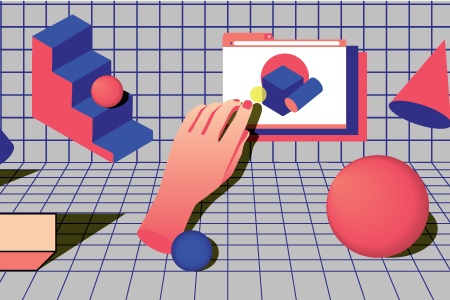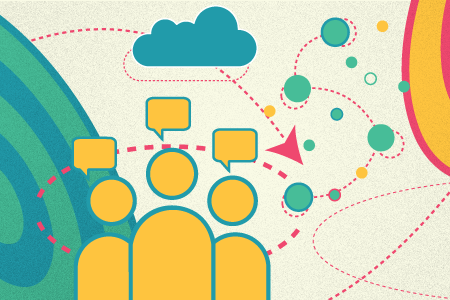
Succeeding in Uncertain Times
The future never ceases to amaze us.
On one hand, we’re obsessed with it. We fret about the uncertainties of tomorrow and the impact they may have on our own lives, the lives of people around us, and on the institutions that matter to us most. We try to anticipate future events and the changes that come with them in order to embrace, adapt or fight as needed.
On the other hand, both as individuals and as organizations, we’re often caught napping by the rapid onset of uncertainties. Corporate history is littered with tales of organizations that were blindsided by trends that now seem imminent and obvious.
How can we better position ourselves for an uncertain future? To understand this, we must first understand ourselves.
How humans see the future
The most common way we anticipate future changes is by using historical extrapolation. We exercise our pre-existing mental models, experiences and knowledge to form opinions on what the future might look like. This makes sense, right? The future often seems obvious in retrospect, but looking ahead, it could manifest itself in so many different ways.
However, our future projections are usually based on a narrow focus on the breakout effect of a handful of trends or forces. We do this as a way to isolate and manage the potential for uncertainty. Although this is a comforting way to work, it limits a full understanding of what’s possible. Sometimes, the future looks nothing like the present. Other times the future simply means continuity of the current status quo. Often, it is a bit of both.
In an organizational setting, the effects of radical changes over a medium-to-long time horizon are further exacerbated. Despite claims (often indignant and impassioned) to the contrary, structured, long-term thinking is rarely embedded into the cultures of most organizations. This is likely because the business machinery built over the last few decades was created to assure the delivery of results under predictable conditions. Frameworks like historical forecasting, competitive benchmarking, ”best practice” analysis and value chain mapping can only use a static snapshot of the past to aid decision-making for the future.
Furthermore, product/service lifecycles and their corresponding time to market are getting shorter, while the variety offered to customers has broadened significantly. The corresponding incentive structures discourage long-term thinking. Companies promise to deliver long-term value but are in fact obsessed with short-term goals and immediate results.
This short-term focus is evidenced by the decreasing time horizon of strategic planning in modern business history. In the 1960s, organizations made 10-year plans. In the decades that followed, five-year and then three-year plans became the norm, Now, companies make 90-day “action plans.” Unfortunately, reducing time horizons doesn’t necessarily lead to flexibility. Too often, it simply breaks down existing rigidity down into smaller chunks.
Position your organization to make the most out of a dynamic and unpredictable business environment. Nokia started off as a pulp and paper mill. The Indian IT giant Wipro started off as manufacturer of refined cooking oils. At a certain point in the past, these companies made a conscious decision to allocate their limited resources to develop new capabilities based on their understanding of the changing business landscape. Disruption, discontinuity and shock are not the same concepts. Each require the ability to pivot, adapt and capitalize on change.
When developing a core strategy, an organization must consider developing contingent strategies around it that get activated due to an internal or external trigger. Whether it is initiating the development of a new product, expansion to an adjacency or entry into a new market, a contingent strategy could take many forms. Businesses need to develop the capability to monitor technologies, regulations and competitive dynamics to understand how these forces work together in a system.
Know what your organization does well and continue to build on these core strengths, but be cognizant of when is the right time to disengage from one capability or develop another. For example, restaurants that traditionally prioritized dine-in experiences have had to adapt to offering delivery capabilities during the COVID-19 pandemic while dining in is no longer an option. No matter what’s in store, preparing for the future is about developing a deeper knowledge and awareness of your organizations strengths and capabilities to better understand their changing relevance .
In volatile environments characterized by liquidity, companies are compelled to capitalize on the transient advantages that they hold and increase their malleability. One way to achieve this is to delegate complete sections of the delivery process on to third parties more capable of effectively and efficiently cover them and focus what you’re good at. Adopting a distributed operating model and joining/establishing business ecosystems provides organizations with a distinct advantage. It enables them to maximize value for their clients while using their limited assets wisely, thereby enhancing strategic flexibility.
Organizational agility goes beyond deployment of the agile methodology and into the realm of people. It means understanding collaboration dynamics, developing scalable processes and building a culture of getting sh*t done, often with limited resources and in an ambiguous environment. There’s no universal formula to instill this attribute across all organizations in a uniform manner. However, agile organizations respond better to change, make quicker decisions, think on the move and develop new capabilities, which is all necessary in uncertain times.
Companies that want to thrive in the future need to take the lead on defining what the future looks like. There exists a clear correlation between a company’s sense of purpose and their ability to innovate and transform themselves. Whether this has to do with changing customer preferences or introducing a new technology, ambition-driven companies need their finger on the pulse to justify major strategic decisions, especially for the medium- to long-term time horizon.
Creativity encourages managers and executives to get out of siloed thinking and question the way things have been traditionally done. Developing this quality emboldens companies to look beyond the world of data and into the world of possibilities. It allows us to ask not just “who are we?” but also “who could we be?”
The future is rarely an agglomeration of individual drivers. Markets and technologies exist in systems, made up of numerous individual factors that are inextricably interlinked to each other. That’s why change often requires entire segments of the system to be reimagined. By embracing the attributes mentioned above, organizations can position themselves to not only survive, but to thrive in the future—no matter what it holds.

Octavio Egea is a Vice President and Head of Innovation, Strategy & Design at frog. For 20+ years, Octavio has been helping organizations decipher, navigate and thrive in complex industry contexts, deploy new growth platforms and embrace innovation to drive superior alpha. He leads a team of passionate strategists, designers and technologists assisting startups and global corporations in identifying emerging opportunities, developing growth strategies, building new businesses and creating innovative and meaningful experiences that resonate with customers and employees.

As an Associate Strategy Director, Arjun specializes in empowering clients to unlock their growth potential and achieve profitability amidst a dynamic and uncertain business landscape. Driven by a passion for cultivating long-term, scalable success, he works closely with organizations, teams and individuals, helping them enhance their capabilities and adapt to complexity and change with confidence. Arjun’s expertise encompasses strategic foresight, product & innovation strategy and creative problem-solving, enabling him to not just identify opportunities but see them through to fruition, driving growth and delivering tangible impact for his clients.
We respect your privacy
We use Cookies to improve your experience on our website. They help us to improve site performance, present you relevant advertising and enable you to share content in social media. You may accept all Cookies, or choose to manage them individually. You can change your settings at any time by clicking Cookie Settings available in the footer of every page. For more information related to the Cookies, please visit our Cookie Policy.


